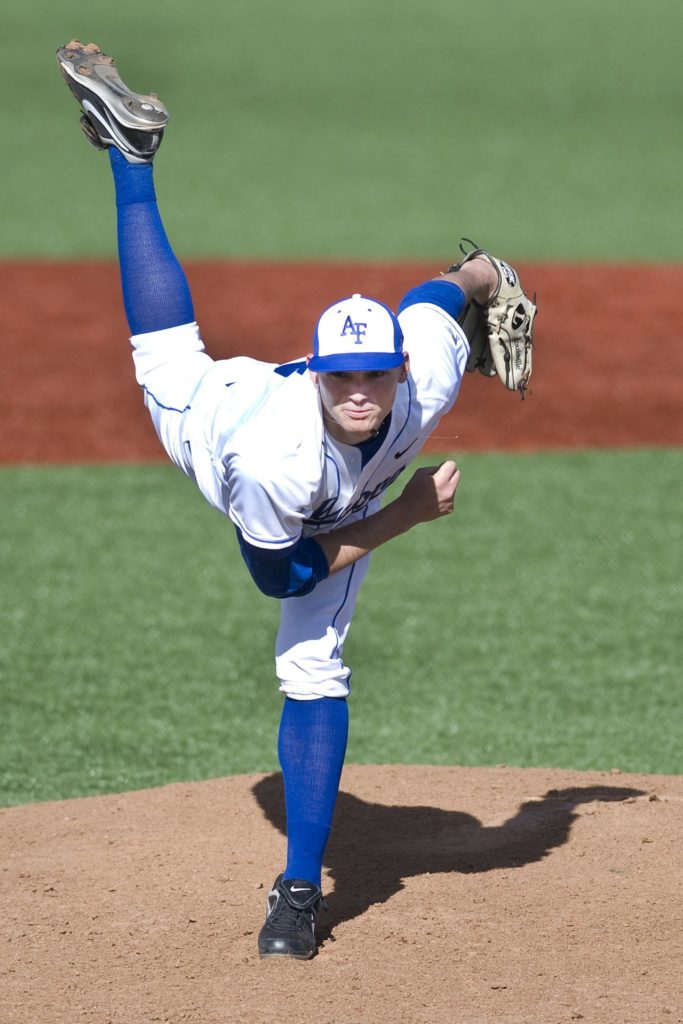Range is more important than velocity – Part 3
May 3, 2022 by Coach McCreary
Filed under Pitching
In Part 1 of this series I explained what “range of velocity” means for pitchers as well as why it is so important. In Part 2 I revisited a concept I’ve written about in the past called “Perfect hitting speed.” Today, in Part 3, we deal with the hard part – actually teaching pitchers to focus on having a range of velocity as opposed to just emphasizing maximum velocity when they take the mound.
This has always been tough to develop for a variety of reasons. It has become even harder in recent years because high-velocity pitchers are all the rage on TV. When I played, it was rare that a pitcher threw in the upper-90’s. It now seems like 9 out of 10 pitchers that come into a televised game routinely throw in the mid to upper 90’s. Top college programs don’t seem to be much different either. Add to this all the social media posts showing high school kids “running-and-gunning” their way to 90+ mph and trying to convince young players to back off on the velocity becomes hard. But high-profile injuries like Jacob deGrom and countless others (unfortunately, even at the lower levels) hopefully will cause the game to rethink the fascination with velocity and return focus to the art of pitching.
If you agree then the following tips may be useful to you and/or your pitching staff. They include ways to create a “pitching” and “range of velocity” mindset as opposed to simply throwing as hard as you can.
Culture. If you want to change your pitchers’ mindset, you have to change your culture. Immerse them in the idea and bring it up constantly. Make posters for the locker room or dugout. Bring attention to it during games and practices. And remember, as the saying goes, “behaviors that get rewarded get repeated.”
Measure it. Some think radar guns are the root of all evil. However, it can be a great teaching tool to measure and assess a pitcher’s range of velocity progress. This is especially true if you can combine radar gun readings with pitching charts (click HERE for a sample chart). Charts by themselves are fine if you do not have access to a radar gun. That being said, radar guns and certainly pitching charts are totally useless if you do not go over the charts with both pitchers and catchers. In my opinion, going over pitching charts pitch-by-pitch after outings and bullpen sessions is THE BEST way to teach the craft of pitching. I see a lot of teams collecting data but not a lot of time spent assessing that data with players. Too often, data is just spoon fed to the players instead of going through it with the players. I did a lengthy seminar on how to use game charts. To get it, click HERE.
Change-up days. Developing a change-up is the best way to add more range to your velocity. It is not an easy pitch to develop, though. One way to speed up that development is to mandate “change-up days.” During change-up days, all pitchers use only a change-up grip throughout the entire practice. When they play catch it is using only a change-up grip. When they take PFP’s (pitchers’ fielding practice) they only use a change-up grip for all throws. The point of change-up days is to get every pitcher comfortable throwing it whenever they want. It also teaches them how to effortlessly grip it correctly since that is what is required when fielding and throwing. If they throw it all the time, it also teaches them to mimic their normal throwing motion which is one of the keys I mention at the end of this video HERE. I also give ten different ways to grip a change-up in the video too!
Force them to throw it. I explain in this recent video HERE why a pitcher cannot develop a change-up in the bullpen. It has to be done in the game. The problem is that most young pitchers will not throw a change-up until they are totally comfortable throwing it. However, to get comfortable throwing it in games … you have to throw it in games! This is where coaches have the dilemma of balancing development vs winning. In the moment, coaches need to decide what is more important to them knowing that there is no perfect answer. Just understand that pitchers MUST throw it in games so a lot of patience is required.
It will be hard and it will certainly take time and patience but creating a mindset where “range of velocity” is more of a priority than pure velocity will pay off in the long run no matter what level the player finds himself.
If you liked this post, please SHARE and SUBSCRIBE to Baseball By The Yard!
Coach McCreary’s Bio Page: https://www.BaseballByTheYard.com/bio
Coach McCreary’s YouTube Channel: https://www.youtube.com/user/meachrm
The Baseball By The Yard Podcast: https://www.baseballbytheyard.com/the-baseball-by-the-yard-podcast/
Coach McCreary’s Resource page for Players and Coaches:https://www.baseballbytheyard.com/resources/
Instructional eBooks and videos: https://bytheyard.gumroad.com






Leave a Reply